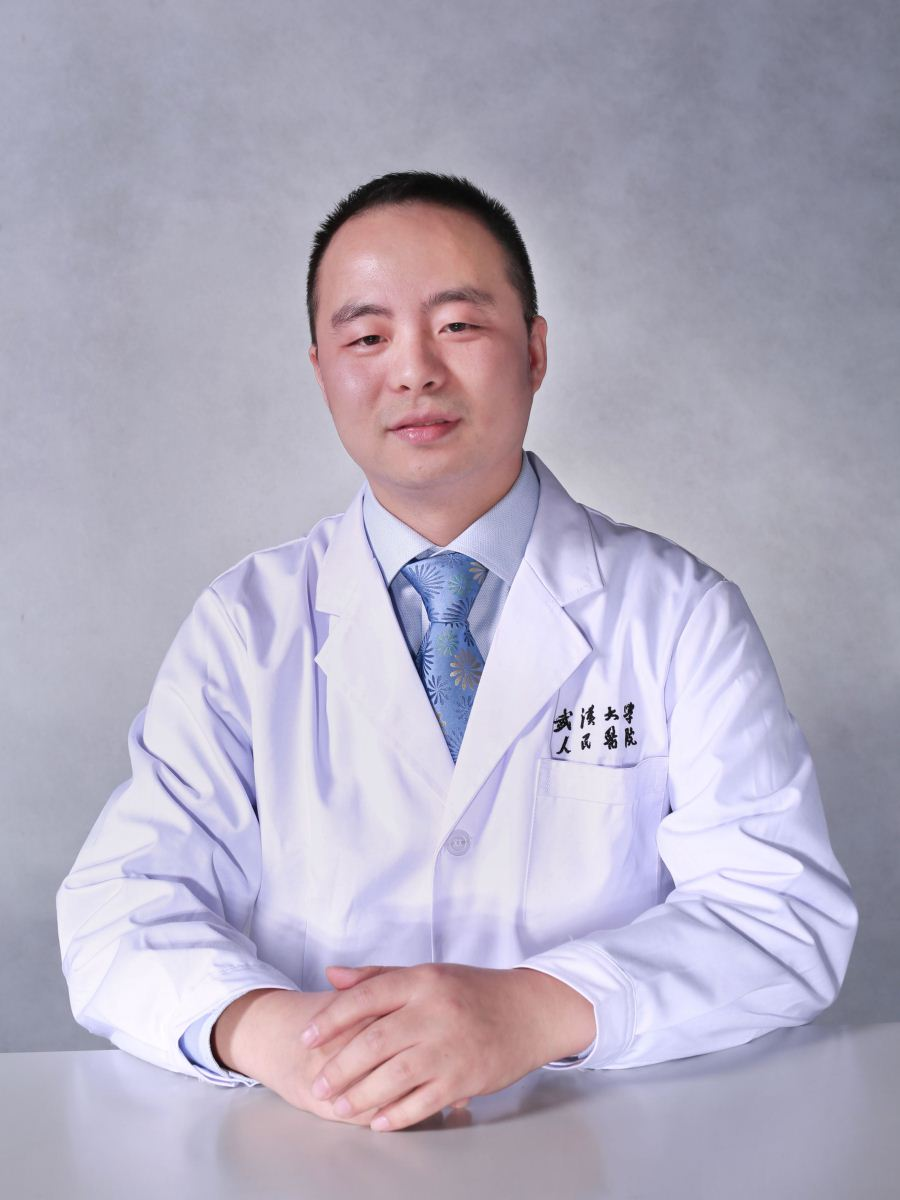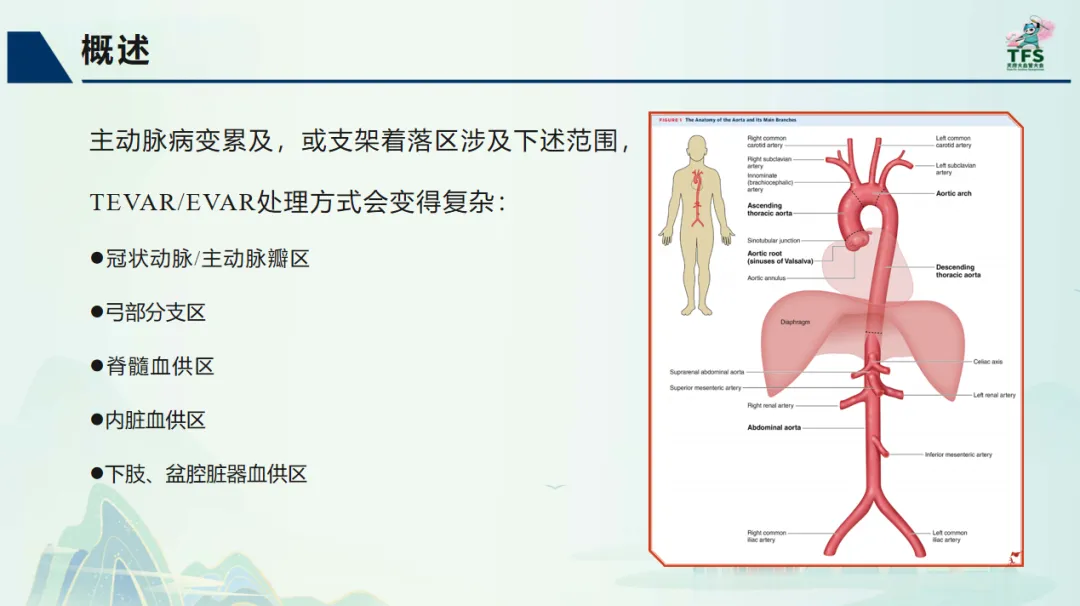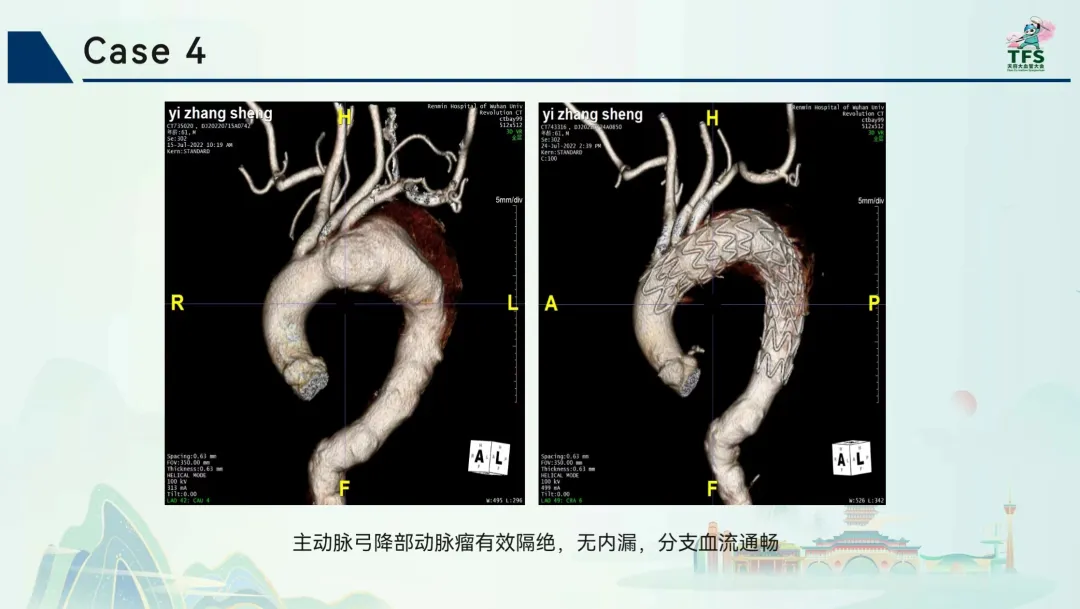The Second Tianfu Great Vessel Conference (TFS 2024) was successfully held on May 17-18, 2024, in Chengdu. As part of the vascular science community, we stand at the pinnacle of medicine, looking forward to the future of our discipline, deeply aware of our significant responsibilities and the honor of our mission. In future sessions, we will decode the contents of the TFS lectures one by one to help you understand the most advanced experiences in vascular treatment.
At this conference, Professor Hu Xiaoping from Wuhan University People’s Hospital presented valuable experiences in the intraluminal treatment of complex aortic diseases, showing how technological advancements have increased the safety and efficacy of treatments. He discussed in detail the clinical application of new stent and fenestration technologies, providing crucial insights into reducing complications and enhancing patient quality of life.

01 Research Background and Technological Development
According to the China Cardiovascular Health and Disease Report (2022), the prevalence and mortality rates of cardiovascular diseases in China are still on the rise. Professor Hu Xiaoping highlighted that cardiovascular diseases are the leading cause of death among urban and rural residents, noting that the volume of intraluminal and open aortic surgeries has been increasing since 2017, from 21,320 cases in 2017 to 31,050 cases in 2021.

02 Clinical Application and Case Analysis
Professor Hu’s team used various auxiliary technologies, including parallel stent techniques (chimney technique, ch-TEVAR) and fenestration techniques (ex vivo pre-fenestration and in situ fenestration), along with branch stents to handle aortic lesions in TEVAR/EVAR. These techniques are applied in different vascular regions, from the coronary/aortic valve area to the spinal blood supply, visceral blood supply, and lower limb/visceral organ blood supply areas.

03 Introduction of New Techniques and Successful Cases
Professor Hu shared successful cases using ex vivo pre-fenestration and in situ fenestration techniques, demonstrating how these new techniques provide more precise treatment options and better patient outcomes in clinical practice. Specifically, a 61-year-old male patient underwent a complete intraluminal treatment for an aortic arch aneurysm using a combination of ex vivo and in situ fenestration techniques without bypass or constricting, successfully avoiding potential complications.

04 Conclusion and Future Outlook
The development and application of these techniques have significantly improved the success rate and safety of treating complex aortic diseases, indicating a broader application prospect in the future field of cardiovascular disease treatment.
05 Contact Us
For further information or inquiries about the techniques discussed or the Tian Fu Symposium, please leave a comment below or email us at: endovascluar@simtomax.cn
For more details, visit our official website: www.vascularknight.com
Follow Us on Social Media:
• Facebook: Vasco Knight
• Instagram: @knight_vasco
Thank you for your attention. Let’s collaborate for better health!
TFS 2024 Highlights
Prof. Hu Xiaoping from Wuhan University People’s Hospital unveiled his latest advancements in intraluminal treatments for complex aortic diseases at #TFS2024, Chengdu.
Innovative Techniques:
• Stent and Fenestration Technologies: Exploring new horizons in cardiovascular treatment, Prof. Hu shared insights into reducing complications and enhancing life quality through cutting-edge stent technologies and fenestration methods.
• Successful Case Studies: One standout case involved a 61-year-old patient treated for an aortic arch aneurysm using ex vivo and in situ fenestration techniques, avoiding major complications.
Research and Impact:
With cardiovascular diseases on the rise in China, the evolving intraluminal and open surgical techniques represent a beacon of hope for improving patient outcomes.
Looking Ahead:
These advancements promise to elevate the safety and efficacy of aortic disease treatments, heralding a new era in vascular medicine.
Engage with Us:
For more insights or to discuss these techniques, visit our website or email us at endovascluar@simtomax.cn.
Read the Full Story: Access the detailed report by clicking “Read the Original” at www.vascularknight.com.
Let’s advance health together!
#VascularSurgery #MedicalInnovation #VascoKnight #AorticDisease #MedicalConference


